
If you’re a cat owner, it’s likely you’ve heard of ear mites. How long can ear mites live on bedding? You probably want to get rid of them quickly.
They’re the pesky little creatures that live inside our cat’s ears and feed on the wax and oils (yuck!). But they can also live in other places, like bedding.
In fact, ear mites without a host can live in your bedding for up to 6 days!
That’s why it’s always recommended to thoroughly wash your bedding with warm water once you find that your cat has ear mites.
Continue reading below for more information on these creatures and how to get rid of them.
Before you scroll further down this guide, check out these other animal-related articles: How Long Do Rhodesian Ridgebacks Live? and How Long Can a Rat Live Without Food?.
Table of Contents
What Are Ear Mites?
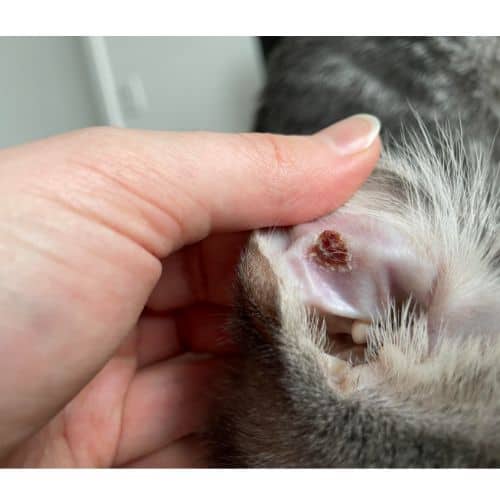
The ear canal is a common habitat for the parasitic ear mite.
They are also known as “Otodectes cynotis” in human medicine and “Psoroptes cunicul” in rabbits and horses.
These small spider-like creatures feast on dirt from the ears and shed skin. You can think of them as little spider zombies.
They are more common in cats but can also infect dogs. They are particularly common in younger animals, puppies, and those with compromised immune systems
How can you tell whether your cat is infected with mites when the parasites themselves are so small?
The most effective strategy is to keep an eye out for symptoms of ear mites in cats, such as:
Head shaking: There is a certain amount of charge shaking that is considered natural; however, if your kitty begins shaking or moving their head a lot, this could be an indication that they have mites or an illness.
Itchy ears: Your feline friend may paw and scratch at their ears to relieve any discomfort or itchiness they are experiencing.
Itchy body: Ear mites can be irritating and itchy, and they can spread to other parts of the body.
Ear twitching: You may notice that your feline friend twitches their ears more or holds them straight and pointing to the sides — what many cat lovers call ‘airplane ears.'”
Ear lesions: Itchy ears are a sign that your cat has ear mites. This constant scratching can cause ear injuries and bleeding if it goes on too long.
Inflammation: Your cat’s ears may become red and heated as inflammation develops from the mite infestation.
Ear drainage: The ear canals might appear to be filled with dark waste that may appear moist or crusty, like coffee grounds. This discharge is caused by inflammation in the area.
How Long Can Ear Mites Live On Bedding?
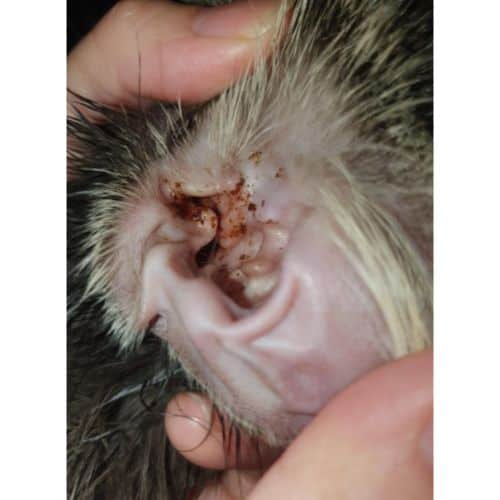
In the absence of a host, ear mites can survive in bedding for up to six days before moving on to another host.
You’re more likely to contract the disease if you and your afflicted pet animal sleep or lounge together.
The mites in an animal’s ears might escape their host and wander around, searching for a cozy new location to call home.
Without a living host, ear mites can thrive on the carpet and bedding. A human eye can hardly detect the presence of an ear mite.
They’re the size of pinheads and completely see-through until they drink blood.
As a result, it could be a little tricky to spot ear mites on the mattress.
They’ll have a brownish appearance and prefer to be active at night. Your afflicted pet probably spreads this tiny terror throughout the house.
Can Ear Mites Be Removed by Washing Bedding?
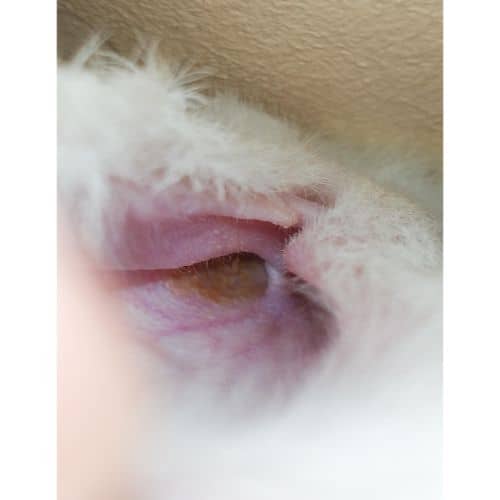
If your cat has ear mites, you should clean your bedding.
Ear mites are highly contagious and can easily spread to other people, animals, and even inanimate objects like couches, chairs, and bedsheets.
It’s important to wash the bedding after a cat has had ear mites so that the parasites don’t spread to other pets or humans.
When washing your sheets, you should always use hot water and a laundry detergent specifying on the packaging that it will help eliminate germs, dust mites, and other parasites.
Only then will the bedding be clean enough to use!
After washing your bed linens, treat them with a fabric softener or antibacterial agent.
It’s also important to keep up with frequent vet visits and procedures to lessen the likelihood of your cat contracting ear mites again and to keep your cat out of your sleeping space and other areas where it could transmit the mites.
Can Ear Mites Spread From Cats to People?
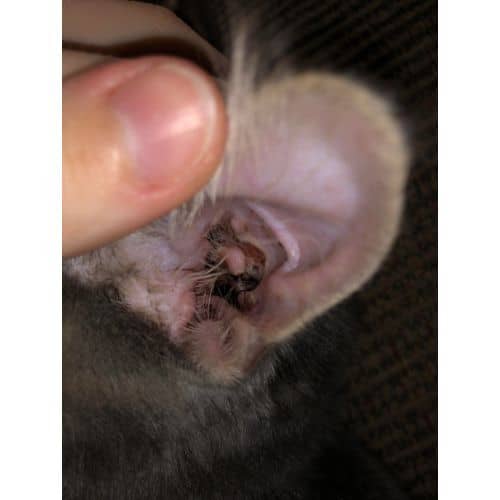
Cats can indeed spread ear mites to people. Ear mites are parasites that survive by feasting on a cat’s ear wax, body oils, and various ear canal body secretions.
If a person comes into contact with ear mites, they run the risk of developing the same symptoms as cats do, including skin irritations, itching, and discharge from the ears.
One way in which individuals can contract ear mites from their cats is by stroking an infected cat or by the mites traveling from the cat to their skin.
Household members are particularly vulnerable because ear mites can hop from cat to human in the same environment.
The transmission of ear mites from dogs to people is uncommon but does occur.
Ear mite infestations in people are a common source of discomfort and, in severe cases, illness.
If you suspect your cat has ear mites, take them to the clinic for treatment and see whether anyone in your home has developed symptoms.
Remove Ear Mites from Your Dog or Cat’s Ears
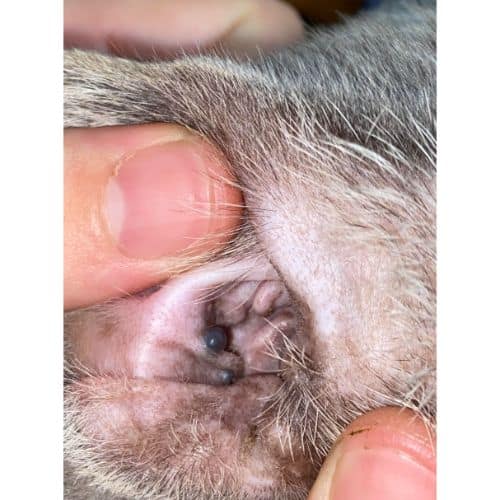
There are several over-the-counter (OTC) solutions for eliminating ear mites in cats and dogs; however, rule number one is that you MUST begin with a clean ear.
Why? The mites won’t go away unless you do this!
The liquid treatment will not penetrate the wax and particles accumulated in your pet’s ear due to ear mites.
Ear mites are clever and burrow through the skin of the ear canal to produce offspring.
It is important to stay one step ahead of the mites.
If you begin by cleaning the ear and removing as much debris as possible, the medication can access the mites and perform its function.
Choosing a good ear cleaner is crucial. Ear cleaners using alcohol, perfumes, or peroxide might irritate your pet’s sensitive ear tissue.
In addition, the constant scratching caused by mites will leave your dog or cat’s ears in rough shape.
If the cleaner irritates their ears, keeping them still while you administer the medication to their ears will be difficult since they will be uncomfortable.
How Can I Tell If the Ear Mites Have Gone?
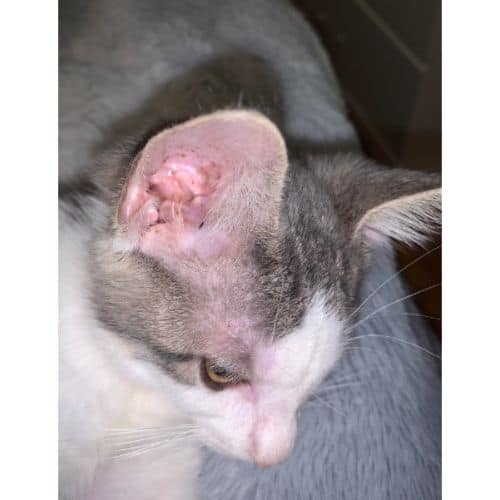
Checking in on the animal’s condition multiple times during treatment is essential for eradicating any remaining ear mites.
Due to the fact that some treatments, if taken excessively, might be harmful to the ear, the treatment plan must be followed carefully.
If you’re worried that your pet still has ear mites, it’s a good idea to look for any telltale signs.
Your pet may have ear mites if you notice them scratching their ears or shaking their head regularly.
Also, check the ears for any dark material or waste left behind by the mites; if you find any, the infestation may not be entirely over.
During treatment, you should also look for symptoms of irritation or discharge in your pet’s ears.
This will let you know if the ear mites are still around or if the symptoms have disappeared.
Lastly, a trip to the vet can confirm whether or not the mites in your pet’s ears have been completely treated.
They may use an otoscope or sample the ear canal to check for mites and suggest additional tests if necessary.
Your veterinarian is your best resource for identifying and eliminating ear mites.
Why Does My Indoor Cat Always Seem to Get Ear Mites?
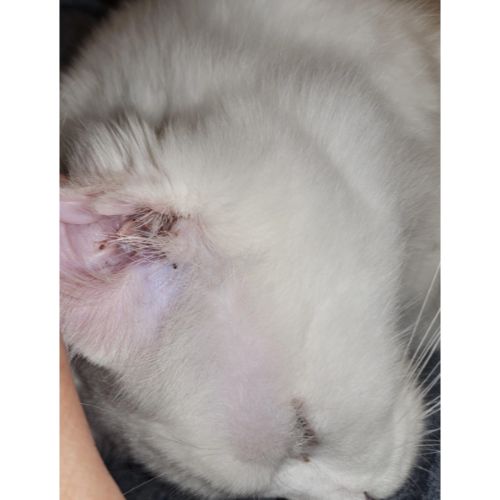
The most prevalent cause of ear trouble in cats is ear mites. Mites are very small parasites that may be found living inside the ears of cats.
These mites survive from the wax and oils that accumulate in the ears. Ear mites can spread from one cat to another or from infected furniture or bedding.
To make matters worse, indoor-only cats are more likely to develop an infestation because they aren’t exposed to the elements that help to control the mite population outside naturally.
Ear mite infestations are most common in cats with allergies, who live in houses with other cats, or who have a compromised immune system.
Ensure your indoor cat has access to topical treatments and preventative medication, and examine its ears frequently to reduce the risk of ear mites.
In addition, having your cat examined by a professional once a year is recommended since finding and treating ear mites early can reduce the likelihood of permanent ear damage.
How Long Can Ear Mites Live on Bedding?
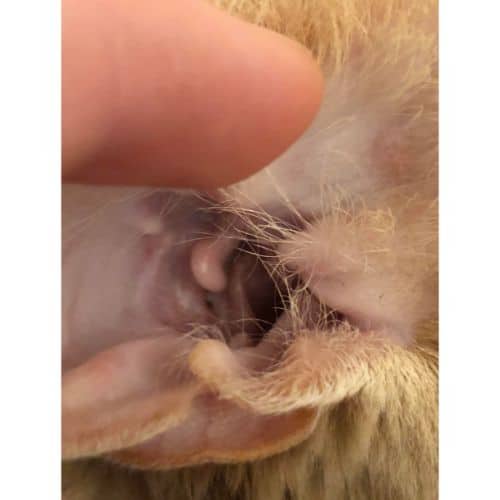
So, ear mites can live in your bedding for almost a week.
The thought of that will creep out many pet owners, but the good news is that ear mites are easy to eliminate.
All you need to do is give your bedding a thorough wash.
If you find this guide, “How Long Can Ear Mites Live on Bedding,” informative and helpful, you can check out these other animal-related articles from our team:
You can learn more about ear mites by watching “Ear Mites in Cats: Causes, Symptoms, & Treatment” down below:




